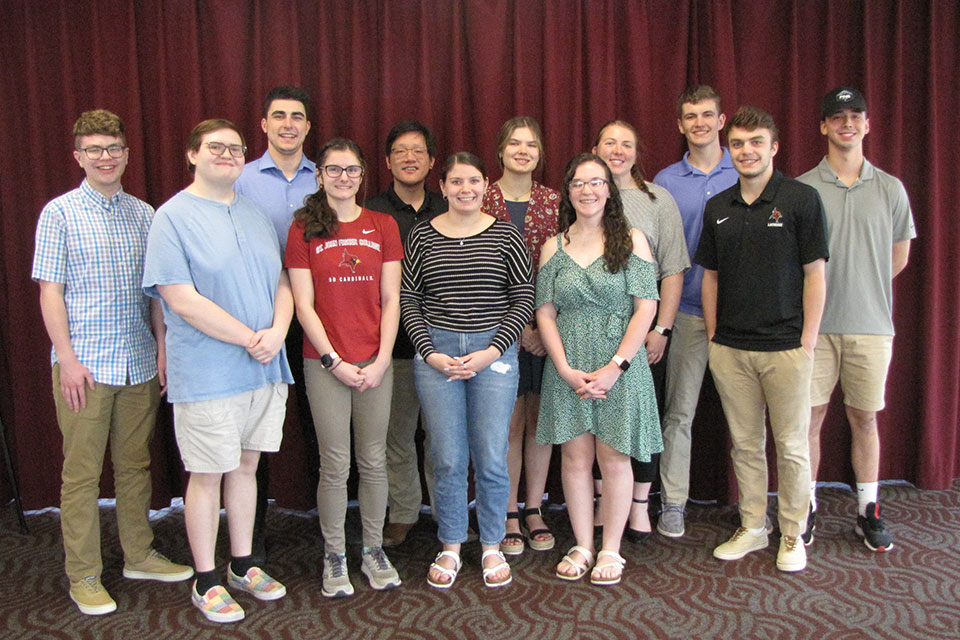Noyce INSPIRE Scholars Celebration Ceremony
St. John Fisher College celebrated student recipients of the Noyce INSPIRE Scholarship during a ceremony held on Monday, April 25.
Hosted by Dr. Kermin Martínez-Hernández, principal investigator of the scholarship program and associate professor in chemistry, the event honored three cohorts of scholars, including its first graduate, Joseph Torrillo ’22. Torrillo will graduate this May with a bachelor’s degree in mathematics and inclusive adolescence education.
During the ceremony, cohort II scholars Ashley Lippa, Lindsey DeBonis, and Sam Acosta were recognized for the successful completion of their first year in the program.
Martínez-Hernández also announced members of the newest cohort, which includes Brigid McGee, Dugan Doeblin, Jacob Breed, Jacob Carpenter, Joe Urlacher, Lauren DeMichele, Makenna King, Olivia Nassivera, and Rocco Olivieri.
As Noyce INSPIRE Scholars, the students receive up to $21,750 per year during their junior and senior years at Fisher to help offset the cost of tuition. And, over two years, they are mentored and equipped with the set of skills necessary to excel at teaching in a high-needs school district.
“Today we celebrated their accomplishment, congratulated our first Noyce Scholar graduate, and welcomed the new scholars,” said Martínez-Hernández. “I am very excited to recruit eight Noyce INSPIRE Scholars for Cohort III; this is our largest cohort of scholars yet. The students are all outstanding and I am looking forward to mentoring them to be effective STEM teachers in high-needs school districts.”
STEM students interested in teaching careers can learn more about the scholarship at https://go.sjfc.edu/noyce or by emailing Martínez-Hernández (kmartinez-hernandez@sjfc.edu). Follow the scholarship program on Facebook, Instagram, and Twitter.
This material is based upon work supported by the National Science Foundation under Grant No. 1852690. Any opinions, findings, and conclusions or recommendations expressed in this material are those of the author(s) and do not necessarily reflect the views of the National Science Foundation.
